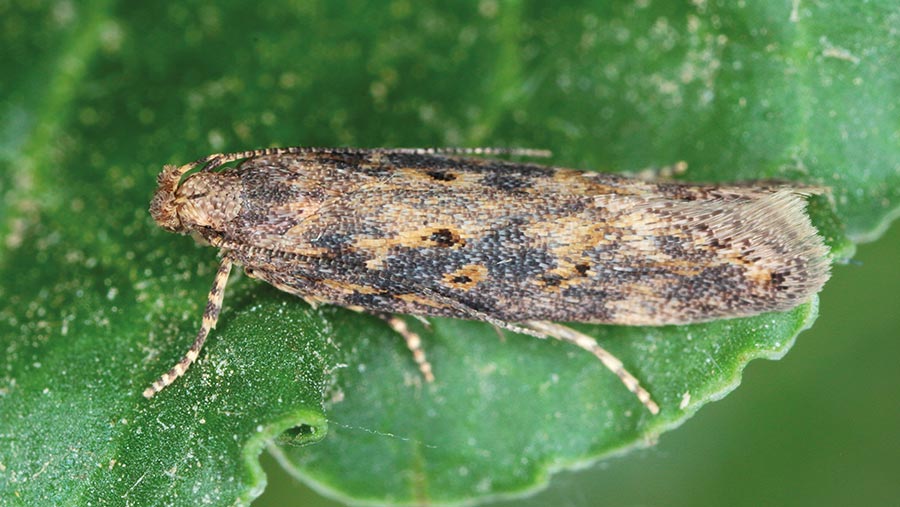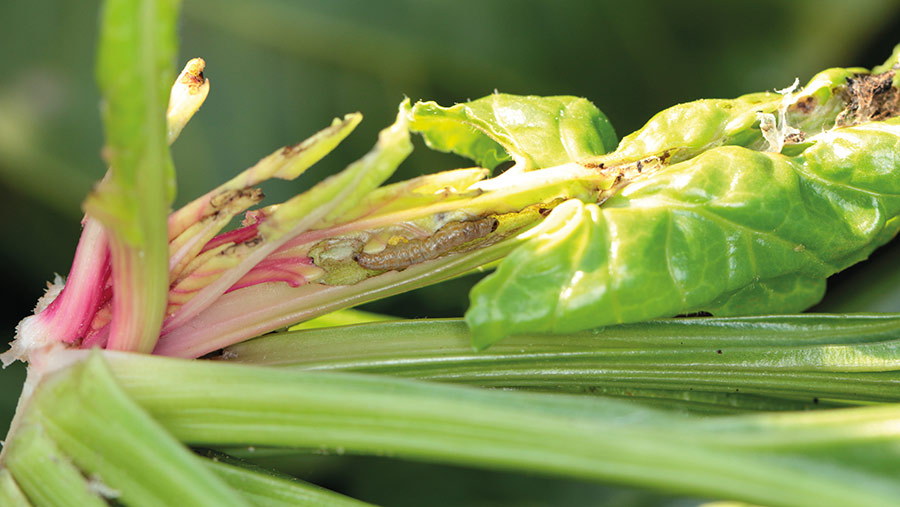Will the beet moth strike again in crops this summer?
 © Tomasz/Adobe Stock
© Tomasz/Adobe Stock English sugar beet growers are counting the cost of the beet moth, which was seen in large numbers for the first time last summer.
The moth (Scrobipalpa ocellatella) devastated some crops with the larvae feeding on foliage, leading to defoliation and secondary rots. Importantly, they can also feed on roots.
Worst affected growers were left with little option other than lifting defoliated crops earlier, losing out on yields.
See also: Herbicide-tolerant sugar beet draws growers amid high costs
So where has it come from and why are UK growers suddenly seeing their crops devoured by the caterpillars?
Rosemary Collier, a specialist in the management of pest insects in horticultural crops at the University of Warwick, has been investigating the outbreak.
She says a good source of information is the network of moth groups in the UK and the well-established wildlife recording across Europe.
UK sightings
Prof Collier points out that until recently, the moth was mostly present in very local populations – shingle coasts and saltmarshes in southern England. The larvae were likely to be feeding on sea beet.
Sporadic inland records were considered as probable wanderers from nearby coastal habitats.
In 2020, a notable influx was reported in Bedfordshire and to a lesser extent in Huntingdonshire.
The following year there were recorded sightings in Suffolk and a few in Cambridgeshire, indicating the possible establishment of inland breeding populations.
Then last summer, there was a significant eruption in the range and numbers both westwards and northward, with hundreds found on some occasions.
Further afield
Looking further afield, the moth does well in warm countries where it completes more generations, says Prof Collier.
She points to Hungary where changes in larval populations were correlated with temperatures in July and August and negatively with humidity.
Similarly, Slovenia first saw it back in 2003, which happened to be a dryer and warmer year, which also hints at the hot, dry conditions last summer being a factor in the population explosion and its spread inland.
But for those growers hoping the cold winter frosts will nip them off, Hungary has cold winters and the British Beet Research Organisation’s head of science, Mark Stevens, confirms that larvae are being seen in crops, suggesting it has survived the December freeze.
When she asked moth experts whether they thought the species had migrated in the UK or from abroad, no one could say for sure.
However, Prof Collier suspects it has spread from the Netherlands and Belgium, as it was a new species to many counties over this period.
How to manage it?
To identify possible ways of managing the pest, Prof Collier has looked at research and experience overseas.
Breeding: Varietal screening in Iran saw some differences, so breeding may help longer term.
Cultural: Plant density and dense canopies are important factors in reducing pest numbers, by increasing the surface area to nutritional area.
The resulting microclimate (particularly raised moisture levels) also favours predators and beneficials.
In Egypt, intercropping sugar beet with narrow row (25cm) onions reduced pest infestations.
Monitoring: Pheromone trapping could have a role in monitoring, as there is a need to know when moths are present and flying. But further work is needed on how many traps are needed and when to deploy them.
Natural control: The moth has a range of natural enemies (such as parasitoids), but detailed work would be needed to determine which occurred in the UK. The pest will also be consumed by general predators such as birds.
Mechanical control: One study showed irrigation can help and there is also work in Egypt showing that ploughing can help, by burying pupae/larva deeper so have further to travel to the surface.
We don’t know how far they fly, but may need to look separation of old crops and new crops.
Chemistry: Finally, on chemical control, it is likely to be killed by insecticides approved for the control of caterpillars, as there is no reason to believe it has developed resistance. But there are no approved products.
If there were, she says targeting contact insecticides may be a problem. “You would have to target the caterpillars, as there is little hope of killing moths, and eggs are not easy to kill too.”
In conclusion, Prof Collier says the moth is here to stay and given the right conditions, it will affect crops again.
Way forward
- Vigilance
- Pheromone trapping very useful to determine timing and abundance
- Consideration of overwintering strategy
- Insecticides – none approved and challenge of targeting caterpilars
Possible lifecycle

© Tomasz/Adobe Stock
- Adult flies at night and early morning, hiding by day under plant leaves or on the soil
- Eggs are laid singly or in groups on the leaves, 15-80 eggs per female. In Egypt, they hatch after four days.
- At first, larvae mine within a leaf or leaf stalk; later, they make a tight spinning within the plant, normally in a terminal shoot. They are also reported to feed in stems, buds or roots.
- In northern Europe, there are probably two generations of moths – flying mid-May to June and August/September
- In southern parts, there can be up to five generations a year. During July in Egypt, the larva takes 14-15 days to complete its development.
- The pupa is spun in a cocoon in the soil or among detritus on the ground and the pupal period is seven-to-eight days in Egypt
- In some parts of its range, winter is spent as a pupae. It seems as if it may also overwinter as larvae
Rosemary Collier and Mark Stevens were speaking at the recent BeetTech 2023 event organised by the British Beet Research Organisation at Newmarket Racecourse.

